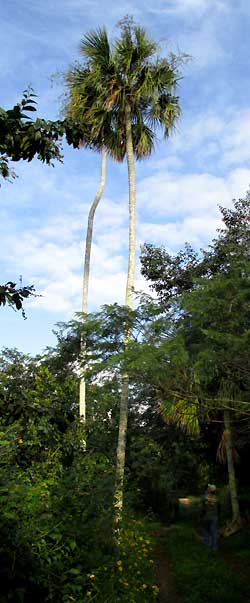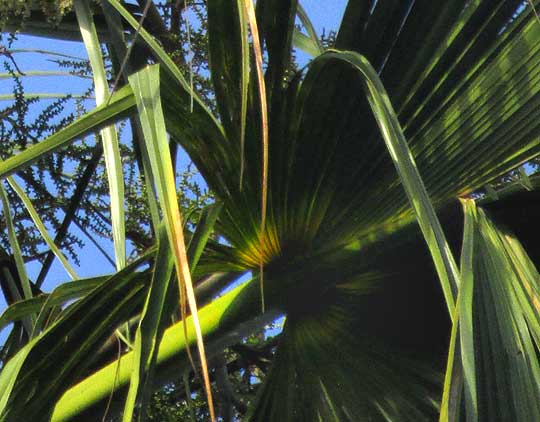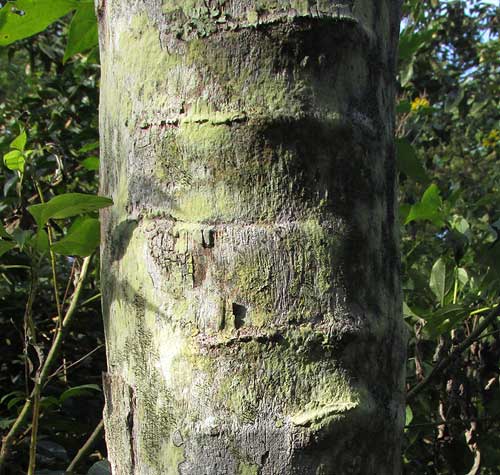Excerpts from Jim Conrad's
Naturalist Newsletter
from the January 11, 2015 Newsletter issued from Río Lagartos, on the Yucatan Peninsula's northern coast (~N21.60°, ~W88.16°), Yucatán state, MÉXICO
HUANO PALMS, TALL & SKINNY
In extreme northeastern Yucatán State at El Zapotal, an isolated protected area administered by the Mexican environmental group Pronatura, there were lots of tall, slender-trunked palms like the one shown below.

That looks a lot like the famous Huano Palm, Sabal yapa, we've met so often in recent years. Huano Palms are common in northern and eastern Yucatan, and that's the species that provided thatch for my hut roof at Hacienda Chichén.
But, the palms in our picture from El Zapotal are taller than those normally seen elsewhere. In the picture, notice my friend Willy below them at the bottom right. Are these regular Huanos who in this protected area have grown larger than the harassed and abused ones normally encountered, or something else? I'd heard of a close relative, the endangered Sabal gretheriae, endemic to just a small part of northeastern Yucatan and described for the first time only in 1991, so could this be that? "Doing the botany" to find out, I began with a closer look at the palm's spherical crown with its inflorescences full of tiny, bee-buzzed flowers, shown below:

An important field mark for members of the genus Sabal is that at the bottom of their fan-shaped fronds the stiff petiole, instead of abruptly stopping at the point of attachment, continues on up into the fan, gradually diminishing in width and ultimately curving a bit, imparting a certain twistiness to the frond. Fan palm fronds with such intruding petioles are said to be costapalmate, and below you can see that this palm's fronds are indeed costapalmate:

The slender parts of the frond, the pinnae, appear somewhat two-toned, paler below, which is a feature of the Sabal mauritiiformis, along with the very tall stems. The trunk's petiole scars from fronds lost long ago give the trunks a segmented look, as shown below:

Between the scars, the stem is exceptionally smooth. Well, the short story is that these tall, spindly fan palms appear to be SABAL MAURITIIFORMIS, found in this area and Belize south to Venezuela. In much of that area it's common in disturbed areas and pastures, but in the Yucatan Sabal yapa is much more common.